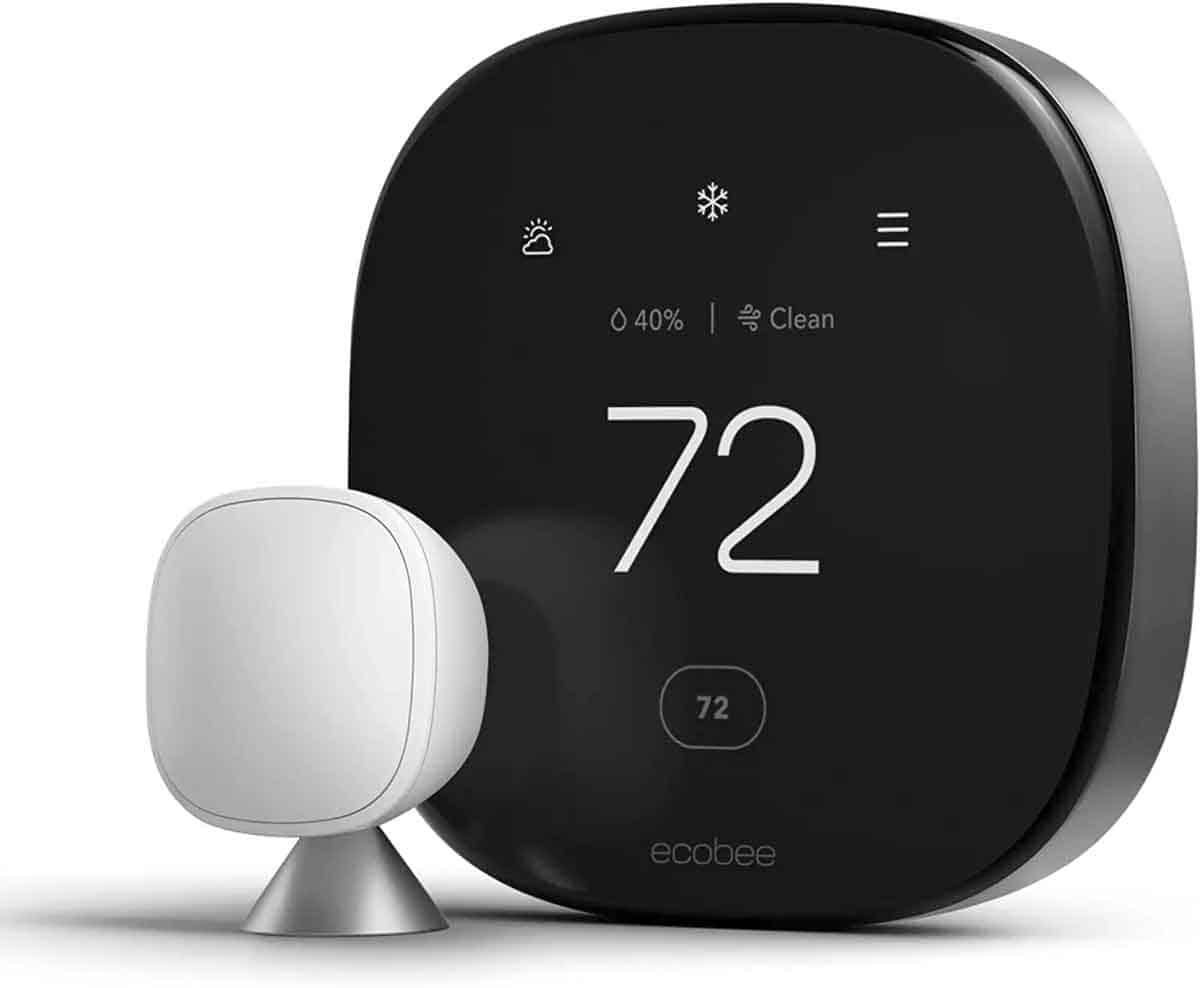Best Smart Thermostat: Nest vs ecobee vs Hive vs Honeywell & More
When you purchase through links on our site, we may earn a commission. Here’s how it works.
| 1st |
|
| 2nd |
|
| 3rd |
|
Is your energy bill outrageously high? Are you taking things to the extreme and not turning your air conditioning on when it’s 102°F outside so you can save a few pennies? Smart thermostats allow you to be comfortable in your home and let you conserve energy while you’re away at work. Learn more in our best smart thermostat review.
What Is the Average Residential Monthly Electric Bill?
According to the U.S. Energy Information Administration (EIA), the average monthly home electric bill across the U.S. was $117.65 in 2020. If you purchase a smart thermostat that saves about 20% of your energy, your monthly bill will drop to about $91.22/month. That’s a savings of around $274 a year.
So, it’s easy to do the math and see that using a smart thermostat pays for itself in just one year’s use. I know $274 doesn’t sound like a ton of money, but over the course of a few years, you’ve saved over $1,000.
Why Use A Smart Thermostat?
Did you know that, according to the U.S. Department Of Energy, 44% of your energy bill is from your heating and air conditioning? And most of that energy is wasted because your home is empty half the day. Smart thermostats learn your schedule, so temperatures are adjusted throughout your home during the day to conserve energy when you aren’t home.
Also, many cities across the country offer rebates for installing a smart thermostat that can help offset the initial upfront cost to purchase the equipment, not to mention all the additional money you’ll save in the long run. Check with your local energy or utility company to find out if you qualify.
Did You Know?
“Smart” thermostats as they are most commonly known today, were previously (and to some extent still are) referred to as “WiFi thermostats” because they typically operate over your home’s WiFi connection.
Best Smart Thermostats
Find out which one of these cool temperature-controlling gadgets will work best for your home in our comparison.
Winner: Nest Learning Thermostat Review
Unlike other smart thermostats, the Nest 3rd generation asks you to turn the temperature up and down as you wish and it does the rest. Nest boasts about its ability to continuously learn about your heating and cooling habits. After a week or two of use, the Nest thermostat will remember your habits and begin to make temperature adjustments automatically. You can also make changes from the Nest app, so if you forget to make a change before you leave home, you can adjust it on the go.
Pros |
Cons |
|
|
Price And Tech Specs
- Price: Check Amazon for availability
- 2.8 inch diameter
- 480×480 pixel display
- Ring dial available in stainless steel, copper, black or white
- 2-year warranty
Read our in-depth Nest Thermostat Review
Runner-Up: ecobee Review
The ecobee smart thermostat has a motion sensor to detect when you’re home and know when to keep a room at a certain temperature. You can program your schedule into the thermostat, so you conserve energy when you aren’t home.
The ecobee includes a remote sensor to be placed in another room to help keep the temperature even throughout the house. You can purchase additional remote sensors for $79 for a two-pack.
If you’re wondering which is better ecobee vs nest, they both are comparable in terms of their features. The major difference being the design of the nest to twist to control whereas the ecobee you use the touchscreen slider. The ecobee also comes with a much lower price tag.
Pros |
Cons |
|
|
Price And Tech Specs
- Price: $223.99
- 3.5 inch LCD color touchscreen
- 320×480 pixel display
- 3-year warranty
Our Personal Experience
After using a Nest thermostat for several years, we started to have system integration issues with it. So we switched to the ecobee 3 light. In 2+ years, we haven’t had any problems (and even had our HVAC replaced during that time). With the Nest, it often auto-adjusted the temperature to maximize efficiency. As eco-friendly as that feature is, we prefer the ecobee that allows manual temperature adjustments. With Google Home, we can take advantage of voice control, which also works to turn the unit on and off. My husband likes the large digital display that allows him to see the temperature from across the room. While the design is not as sleek and modern as Nest, this is a fool-proof, simple to install and use smart thermostat. – Sadie C.,
3rd Place: Hive Smart Thermostat
The Hive Smart Thermostat works like the other smart heating and cooling systems but is compatible with the Hive family of products including smart light bulbs, home alarm system, and more. You can set up to six daily schedules, create actions (such as “when it’s dark outside, make the house 77 degrees), use quick heat or cool mode, use geolocation to automatically adjust when you are away, and more.
The only downside is this is only compatible with other Hive products and requires a smart hub to connect to the network.
Pros |
Cons |
|
|
Price And Tech Specs
- Price: $99.95
- 10.2 x 3.2 x 5.5 inches
- Touchscreen
- Manufacturer’s warranty available
Honorable Mention: Honeywell Lyric T5 Review
The Honeywell Lyric T5 smart thermostat is pleasing to the eye, but unfortunately, many consumers have found lots of frustration with it. Users complain of geofencing issues (more on geofencing below) and major app issues.
The Lyric claims to have unique features like Fine Tune to adjust your home’s humidity level, but the execution isn’t living up to the marketing just yet. Perhaps Honeywell will update the device and software, but for now, we’d recommend another thermostat.
Pros |
Cons |
|
|
Price And Tech Specs
What Is Geofencing?
Geofencing is a feature that uses GPS from your smartphone to define geographical boundaries. When you’re heading home, and you reach your pre-set geofence (say, 10 miles away), your settings will adjust to what you want them to be once you arrive home. The same occurs when you exit the boundaries (the settings will go to a more energy-efficient mode).
Learn more about Geofencing in this video from Proximi to understand how to use it.
Save Even More With Smart Hubs And Light Bulbs
Why stop at just saving money with your energy bill? Using a smart home hub you can automate other aspects of your home and make sure you’re optimizing energy usage. Another simple way to reduce your energy bill is to use efficient lighting systems using smart light bulbs.






